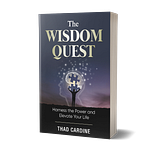"A Spiritual Look at Grief" is a book by Joyce Finch that aims to provide guidance and support for individuals and families dealing with grief, particularly in the context of Christian faith. The text explores the complexities of grief, highlighting the emotional and spiritual aspects, and outlines various stages and tasks of mourning as described by different authors. Finch shares her personal experiences with grief, including the loss of her sister-in-law, brother, and parents, and offers insights into dealing with guilt, anger, and finding meaning after loss. The book also touches upon themes like shattered dreams, prolonged grief disorder, and the impact of events like the COVID-19 pandemic on the grieving process. Finally, the text provides practical suggestions for clients and students navigating grief, emphasizing self-care, support groups, and seeking professional help.
A Spiritual Look at Grief:
Source: Excerpts from "Joyce Grief: A Spiritual Look at Grief Formatted.pdf" by Joyce Finch, Ed.D., LPC
Main Themes:
The multifaceted nature of grief: Grief is explored beyond the death of a loved one, encompassing losses like shattered dreams, health, pets, friendships, jobs, financial security, and significant life changes.
The spiritual dimension of grief: The author integrates her Christian faith and biblical verses to provide comfort and perspective on coping with loss and finding meaning.
The nonlinear and individual process of grief: The book emphasizes that there is no right or wrong way to grieve, and individuals experience and progress through the stages differently.
The importance of forgiveness: Forgiveness, of oneself and others, is presented as crucial for healing and moving forward after a loss.
Key Ideas and Facts:
Chapter 1: What is Grief?
Grief is defined as a deep distress caused by bereavement or significant loss.
The book explores various models of grief stages, including Kubler-Ross' five stages (denial, anger, bargaining, depression, acceptance), Worden's four tasks of mourning, and Murray Parkes' stages.
The author highlights the chaotic and disorganized nature of grief, emphasizing that there is no set timeframe.
Chapter 2: Anger
The author shares personal experiences of anger towards God and the drunk driver who killed her sister-in-law.
The chapter delves into the complexities of anger as a natural response to loss and its impact on relationships.
The story of the author's brother finding solace in faith and becoming a monk after his wife's death showcases the diverse ways individuals cope.
Chapter 3: Shattered Dreams
The concept of "shattered dreams" is introduced through the analogy of a broken flowerpot, signifying the loss of hopes and plans.
The author poignantly recounts her family's struggles with her father's MS and the financial hardships they faced.
The chapter emphasizes finding meaning and rebuilding after shattered dreams, highlighting the importance of resilience and hope.
Chapter 4: Guilt
The chapter defines guilt in bereavement as remorse and self-blame for perceived failures in relation to the deceased or the death.
Examples from the author's counseling practice illustrate the common experience of guilt among grieving individuals, including survivor's guilt.
The author provides a comforting poem that encourages finding peace and release from guilt.
Chapter 5: Prolonged Grief Disorder
Prolonged Grief Disorder (PGD) is introduced as a diagnosis for intense grief lasting longer than a year after the loss of a loved one.
The DSM-5 criteria for PGD are listed, including symptoms like disbelief, avoidance of reminders, intense anger, and difficulty re-engaging with life.
The chapter acknowledges the potential health risks and social isolation associated with PGD.
Chapter 6: Loss Other Than a Loved One
This chapter expands the discussion of grief to encompass losses like miscarriage, the death of a pet, and aging.
The author shares personal experiences of miscarriage and coping with the emotional impact.
The importance of acknowledging children's grief over pet loss and providing support is emphasized.
Chapter 7: Forgiveness
Forgiveness is defined as giving up anger and offering an undeserved gift to the offender.
Enright's four phases of forgiving (uncovering, decision, work, deepening) are outlined, providing a framework for the process.
The author's personal journey of forgiving the drunk driver who killed her sister-in-law illustrates the complexities and liberating power of forgiveness.
Chapter 8: Suggestions for Clients and Students
Practical suggestions for coping with grief are provided, including self-care, joining support groups, talking to loved ones, avoiding major life changes, and seeking professional help.
Resources like GriefShare groups and Bo's Place are recommended.
Chapter 9: Conclusion
The author reflects on her personal experiences with grief and finding new meaning after various losses.
The book concludes by emphasizing the importance of accepting change, utilizing coping strategies, and finding meaning in life after loss.
Notable Quotes:
“Blessed are those who mourn, for they shall be comforted,” (Matthew 5:4)
“Anger enslaves the intellect, and makes you regard your brother with bestial cruelty,” (St. Mark the Ascetic)
"Hold fast to dreams, For if dreams die, Life is a broken-winged bird, That cannot fly," (Langston Hughes)
“For I am persuaded that neither death nor life, nor angels nor principalities nor powers, nor things present nor things to come, nor height nor depth, nor any other created thing, shall be able to separate us from the love of God which is in Christ Jesus our Lord,” (Romans 8:38-39).
"For if ye forgive men their trespasses, your heavenly Father will also forgive you; But if ye forgive not men their trespasses, neither will your Father forgive your trespasses," (Matthew 6:14-15)
"Grief hangs around like a homeless dog. Avoidance of grief will not be successful," (Bowman)
Overall Impression:
The book offers a compassionate and insightful exploration of grief through a spiritual lens. It provides practical advice, relatable anecdotes, and scriptural references to support individuals navigating loss and finding healing. The author's personal experiences and counseling expertise lend credibility and a sense of hope to the reader.













Share this post